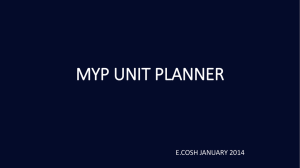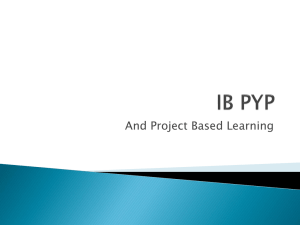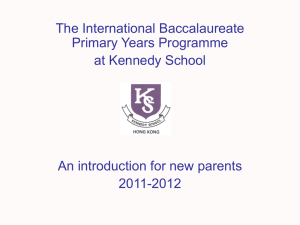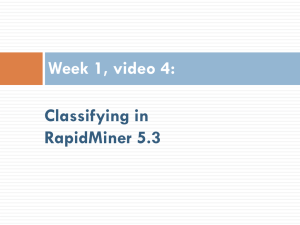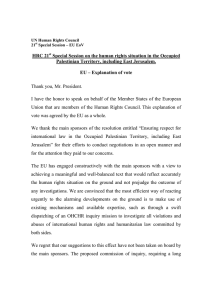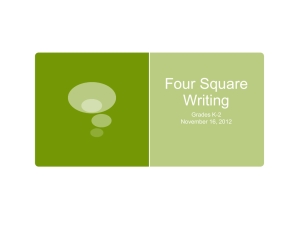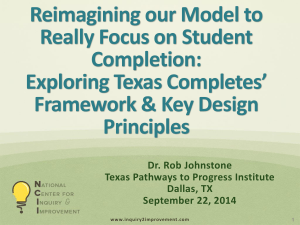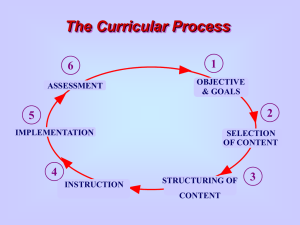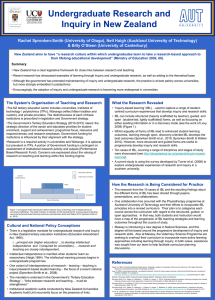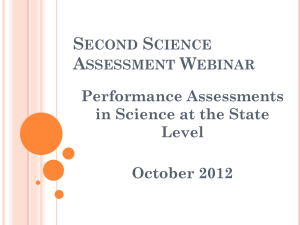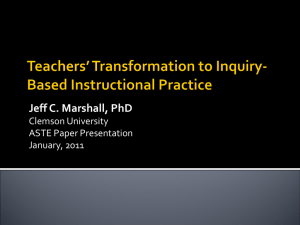UGDSB – Inquiring Minds Want to Know
advertisement
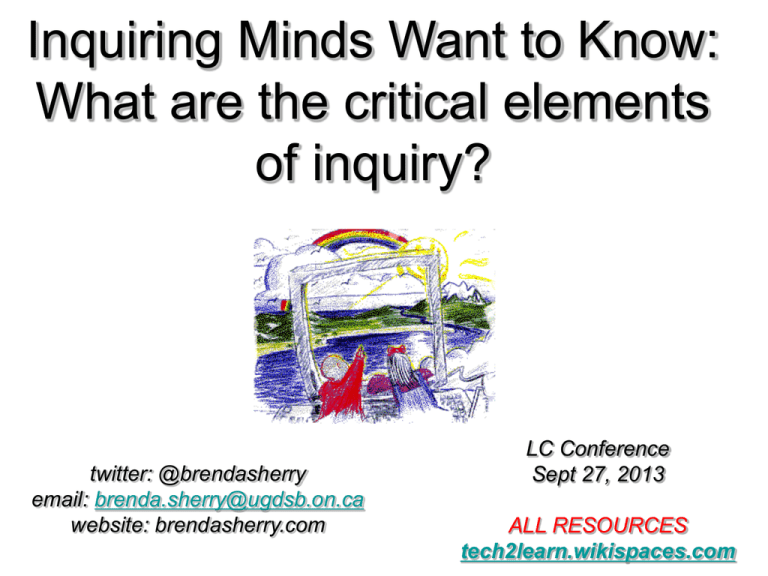
Inquiring Minds Want to Know: What are the critical elements of inquiry? twitter: @brendasherry email: brenda.sherry@ugdsb.on.ca website: brendasherry.com LC Conference Sept 27, 2013 ALL RESOURCES tech2learn.wikispaces.com Guided Inquiry Project-based Learning Knowledge Building Open Inquiry Problem-based Learning Structured Inquiry Coupled Inquiry by tambakothejaguar on flickr Inquiry-based learning Active Learning Wondering... • • • • Is it really inquiry? What elements must I think about while planning? How do I make sure everyone is learning? What is the culture I need to build to ensure that successful inquiry happens ? John Dewey - 1938 Learners draw meaning by connecting one experience to another and to the future, and by collecting and by reflecting on and organizing the ideas that emerge from the experiences. What are the implications for our classrooms? What is missing? Your top 5 elements of inquiry... Reflect on process; Generate new questions Share demonstrations of learning with others Tap into prior knowledge, background knowledge Common Generate intriguing problems and/or questions Inquiry Organize info, draw conclusions and new understandings Framework Develop a plan for investigation Select and analyze resources http://www.inquiryschools.net What is PBL? From the Buck Institute at www.bie.org focuses on the central concepts and principles of a discipline involves students in problem-solving investigations and other meaningful tasks allows students to work autonomously to construct their own knowledge, and culminates in realistic products. What is PBL? (cont’d) George Lucas Educational Foundation at Edutopia.org is curriculum fueled and standards based asks a question or poses a problem that each student can answer asks students to investigate issues and topics addressing real-world problems while integrating subjects across the curriculum is a method that fosters abstract, intellectual tasks to explore complex issues. What is PBL? (cont’d) Linda Darling-Hammond PBL involves completing tasks that typically result in a realistic product, event, or presentation to an audience. central to the curriculum organized around driving questions that lead students to encounter central concepts of a discipline focused on a constructive investigation that involves inquiry and knowledge building student-driven, in that students are responsible for making choices &for designing &managing their work authentic, by posing problems that occur in the real world and that people care about What is PBL? (cont’d) Susie Boss and Jane Krauss (ISTE, 2007) Projects form the centerpiece of the curriculum - they are not an add-on or extra at the end of a "real" unit. Students engage in real-world activities and practice the strategies of authentic disciplines. Students work collaboratively to solve problems that matter to them. Technology is integrated as a tool for discovery, collaboration, and communication, taking learners places they couldn't otherwise go and helping teachers achieve essential learning goals in new ways. Reinventing Project-Based Learning: Your Field Guide to Real World Projects in the Digital Age Seymour Papert and Hard Fun! • • • kids like hard fun, important work, challenges kids need to see us learning kids can think like mathematicians, scientists, artists What does inquiry look like in science? • • • • search for accurate and replicable evidence confirming or refuting a hypothesis drawing conclusions about a truth identifying misconceptions by going beyond observations to investigate fallacies What does inquiry look like in math? • • • problem-solving and reasoning looking for patterns and relationships in the physical world more involved with accuracy and logical thinking rather than point of view What does inquiry look like in history or social studies? • • • • • assess evidence for point of view assess evidence for social and historical point of view finding multiple truths representative of different perspectives and time periods understanding your own personal bias What does inquiry look like in language arts? • • • • • interpretation of evidence weighing social context determining point of view and author’s purpose synthesizing and making inferences questioning Crowdsourcing the Wisdom in the Room Continua to Consider for Effective PBL Peter Skillen & Brenda Sherry, 2012 David Thornburg http://www.youtube.com/watch?v=R4CeceFQAJ8 Flavoured Tobacco Project How do we make sure everyone is learning? Developing a community of thinkers Habits of Mind from Deborah Meiers - Mission Schools Evidence: How do we know what's true and false? What evidence counts? How sure can we be? What makes it credible to us? This includes using the scientific method and more. Viewpoint: How else might this look if we stepped into other shoes? If we were looking at it from a different direction? If we had a different history or expectations? This requires the exercise if informed "empathy" and imagination. It requires flexibility of mind. Connections/Cause and Effect: Is there a pattern? Have we seen something like this before? What are the possible consequences? Conjecture: Could it have been otherwise? Supposing that? What if ? This habit requires use of imagination as well as knowledge of alternative possibilities. It includes the habits described above. Relevance: Does it matter? Who cares?

